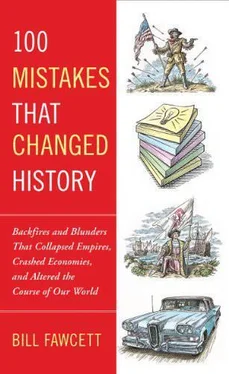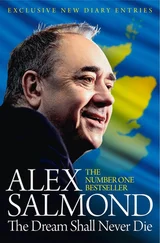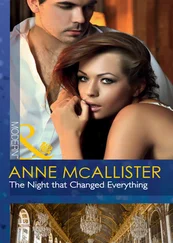Until the midafternoon, the two equal-size armies fought and bled with no major effect. In a well-executed combined army attack, Ney captured La Haye Sainte, a fortified villa in the center of the battlefield. It was not until in the later afternoon that Wellington decided to march his infantry from their forward position to one behind a hill. This would protect them from the French artillery. As the day progressed, the ground had dried, allowing the round cannonballs to bounce and roll with deadly effect.
Napoleon was far behind the lines, and Ney, as usual, was close to the fighting. When he saw the British infantry begin to pull back and out of sight over the hill, he drew the conclusion that they were retreating. The best way to shatter an army that was beginning to retreat was to slash into them with a force they could not outrun, the cavalry. Without checking with Napoleon first, he saw a way to win the battle. Marshal Ney put himself at the head of more than 10,000 horsemen and charged. It was virtually all the riders still able to charge, and he led them after the “retreating” British foot.
The normal response by infantry of the day was to form a square of men who stood with their bayonets facing out on all four sides. This kept the cavalry at a distance, allowing others in the square to shoot at them. But the cavalry square was vulnerable to any infantry also attacking since it had only a quarter of its men facing in any one direction. A square of infantry is even more vulnerable to artillery fire, as the cannonballs and canister rounds wreaked havoc on the closely packed and motionless formation.
But there were not many unengaged infantry battalions nearby when Ney ordered the charge. Ney, impetuous as always, was more anxious to catch the fleeing British than to ensure a well-rounded attack. He did ask Napoleon to send infantry to follow up the attack, but there were few divisions left in reserve after the Prussians had appeared. So Napoleon had no infantry he could send to support Ney’s attack.
Ney’s lack of infantry support would not have been a problem if Wellington had actually been retreating. But the British were not running. They were just over the hilltop and quickly formed squares. Ney, his fighting spirit up, led charge after charge against those squares. French horse guns did come up and punish the British, but not enough to break them. There was no infantry to deliver a final blow. By the fifteenth or sixteenth charge, the French cavalry was so exhausted their horses walked up to the squares. Even without French infantry support, a few squares were broken and the soldiers in them slaughtered. Many of the British squares had as many wounded men sheltered in their centers as healthy ones who held the sides. It was recorded that some British units had lost so many men while facing the French cavalry that when they finally moved away, the location of the infantry square was marked clearly by the bodies left behind.
Napoleon was said to be furious when informed of the charge. With the Prussians approaching, he knew he had no infantry to support it. However, he and his guard were not ready to commit his last reserve. But there was no way to call back the attack and no way to stop Ney from charging time after time until the French horses were too blown to fight further.
Grouchy had pushed the Prussians from their rear, but was now tied up fighting a quarter of von Blucher’s Prussians with his third of the French army at Wavre. This left the rest of the Prussians to march toward Waterloo. When they appeared, Napoleon responded by sending his Young Guard to slow them. As the cavalry charges were ended due to the complete exhaustion of the horses, there still seemed a chance to at least drive off Wellington before enough Prussians arrived to guarantee defeat. So Napoleon Bonaparte turned to his last reserve. The Old Guard formed into massive columns and charged up the hill and toward the battered British and their Dutch allies.
At this point the Anglo-Dutch army was in bad shape. Some units were at less than half strength. Few British cavalry were capable of attacking, and the heart was gone from the Dutch units. It has to be remembered that less than two years before, these Dutch soldiers had been part of the Grande Armée, idolizing the French emperor they now fought. Wellington was quoted as saying all was lost unless they soon had the Prussians or sunset. Sunset was still a few hours away. He had no reserves left at all.
The Old Guard marched forward, hoping to smash through the punished British infantry. If they did, it was likely Wellington’s entire army would fall apart. Instead of breaking through, the guard’s massive columns were shot apart, and they were finally forced to retreat. When word spread that the Prussians had arrived and that the guard was retreating, it was Napoleon’s army of the north that dissolved. Victory or defeat had come down to the last fight between the French reserve and desperate British regiments.
An ill Napoleon had not been able to keep his impetuous second-in-command under control. Marshal Ney had ordered a charge with the last of the French uncommitted formation, its cavalry. Ignoring the fact that he was supposed to be commanding the entire French army, Ney charged over a hill and into the unknown. He expected to seal a victory and instead rode to defeat. If Napoleon had chosen the more competent and less impulsive Davout to lead his army, the Battle of Waterloo might well have ended as “a near run thing” that was a French victory. Had Napoleon Bonaparte won at Waterloo, he might well have been able to dictate a peace that could have kept him on the throne of France.
49. INVITING IN THE ANGLOS
Welcome to Texas
1821
When Mexican authorities allowed Anglo settlers into Texas in 1821, they believed it would be in their best interest. By letting outsiders develop land that the Spanish settlers did not want, the state would benefit from the cotton and cattle industries that were so prevalent in the southern areas of the United States. It seemed like an amicable arrangement, but Mexico got more than it bargained for.
For the most part, Mexico had a “no foreigners” policy, but they saw nothing wrong in allowing foreigners to populate remote areas. They adopted an “out of sight, out of mind” attitude toward the new settlers. This attitude was nothing new. In 1790, Anglo settlers moved to Spanish-owned Upper Louisiana. They were looking for a new life, and the Spanish were looking for people who could keep the Comanche and Kiowa at bay. There were three requirements for newcomers: They had to be Catholic, hardworking, and willing to become Spanish citizens. In 1821, when Mexico won its independence from Spain, the new government adopted the same policy.
Anglo settlers came from all over the United States, enticed by cheap land and the promise of a better future. Back home, they had to pay dearly for land. The going rate in the United States was $1.25 per acre for a minimum of eighty acres. In Hispanic-owned Texas, settlers could purchase land for $0.04 per acre. In addition, the head of the family, whether man or woman, could claim 4,605 acres. The $184 needed to purchase the land could be paid over a six-year period.
As if this alone weren’t reason enough to lure settlers into Texas, there were others. Back in the United States, many settlers suffered foreclosures due to crop failures, or they were seriously in debt. Since there were no extradition laws between Mexico and the United States, people could escape their creditors by moving and settling in Mexican territory. Like the settlers on previously owned Spanish lands, new settlers in Texas had to become Catholic, and they had to take an oath of allegiance to Mexico. To most this seemed a small price to pay for a new life with a clean slate.
Читать дальше












